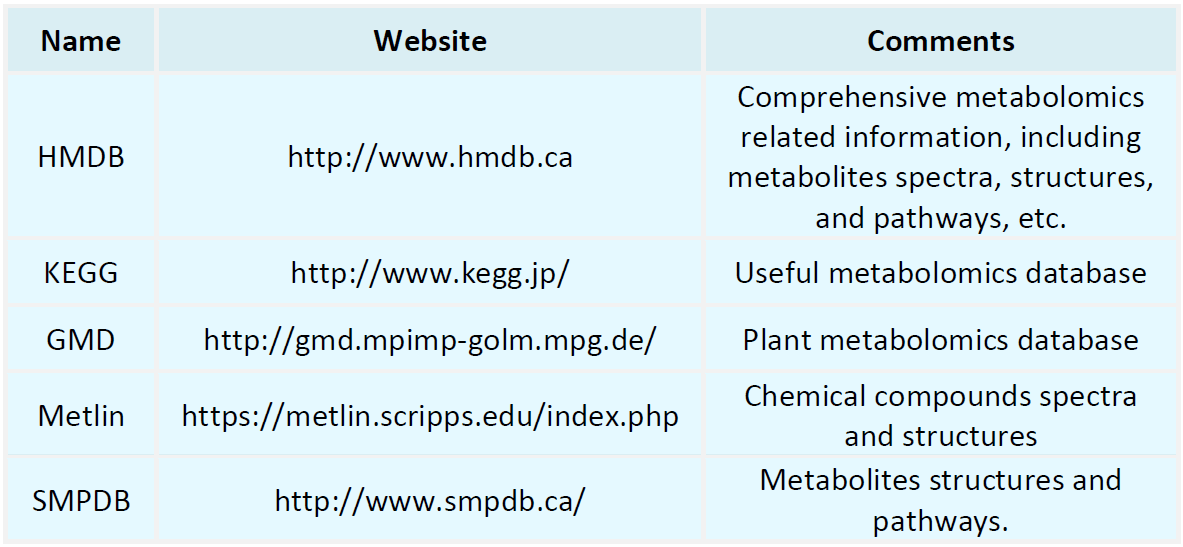Resources
Proteomics Databases

Metabolomics Databases

-
• Differential Proteomics Analysis of Mice
Mouse models are instrumental in predicting and elucidating the pathophysiological mechanisms of human diseases. Proteomics, which involves the large-scale analysis of proteins to understand their structure, function, and interactions, is a pivotal approach in contemporary biomedical research. Differential proteomics analysis, a core component of proteomics, seeks to identify changes in protein abundance across different samples or experimental conditions.
-
• Differential Expression Peptide Screening in Proteomics
Proteomics is a scientific field focused on comprehensively studying the diverse dimensions of proteins, including their expression levels, interactions, modifications, functions, and roles in cellular processes. Advances in proteomics methodologies and applications have positioned it as a crucial tool in biomedical research. Nonetheless, the precise and effective identification of differentially expressed protein peptides remains a significant challenge.
-
• PRM LC-MS Targeted Proteomics
Proteomics is an essential approach in biological research for exploring protein functions and structures. Recently, PRM (Parallel Reaction Monitoring) coupled with LCMS (Liquid Chromatography-Mass Spectrometry) has emerged as a highly precise method for targeted protein analysis, enabling quantitative measurements of specific proteins within the proteome.
-
• Differential Protein Analysis and Annotation in Proteomics
Proteomics is the study of the large-scale expression, structure, and function of proteins. One of its crucial steps is differential protein analysis, which involves collecting protein samples, separating and identifying proteins, and performing quantitative and qualitative analyses. Finally, protein annotation is conducted to gather functional insights.
-
• Targeted Quantitative Proteomics SRM
Selected Reaction Monitoring (SRM) is a widely applied technique in quantitative proteomics. Owing to its exceptional sensitivity and quantitative accuracy, SRM is indispensable in various research domains. It is primarily utilized for the quantitative measurement and validation of specific proteins. The operating principle of SRM is based on detecting and quantifying target analytes via predefined target ions.
-
Proteins are fundamental to life, performing essential functions such as catalyzing biochemical reactions, safeguarding the immune system, and facilitating molecular transport. Since protein structure is intrinsically linked to function, elucidating protein structures holds immense scientific significance and wide-ranging applications. One of the most advanced approaches in this field is three-dimensional (3D) structural proteomics.
-
• What Is Single-Molecule Protein Sequencing Technology
Single-Molecule Protein Sequencing (SMPS) is an emerging technology that enables the determination of protein amino acid sequences at the single-molecule level. This technique has promising applications in biology, drug development, and disease diagnostics. The Significance of Single-Molecule Protein Sequencing Technology: Over the past few decades, rapid advancements in DNA sequencing have significantly propelled progress in biological sciences. However, DNA sequencing alone does not provide direct........
-
• N-Terminal Amino Acid Sequencer
The N-terminal amino acid sequencer, also known as an amino acid sequence analyzer, is a device designed to determine the sequence of amino acids in proteins or peptides. This technology employs the Edman degradation method, which involves a series of chemical reactions to sequentially identify each amino acid from the N-terminal (amino terminus) of a protein or peptide. The operational foundation of the N-terminal amino acid sequencer lies in Edman degradation.
-
• Amino Acid Sequence Variation Analysis
Amino acids are the fundamental building blocks of proteins and play a crucial role in biological processes. Variations in amino acid sequences are key drivers for organisms adapting to environmental changes and undergoing evolution. This article discusses how to analyze amino acid sequence variations. Concept of Amino Acid Sequence Variation: Amino acid sequence variation refers to changes occurring in the amino acid sequences of a species over time.
-
• Edman Degradation Service for Protein Sequencing
Edman degradation service is an established method for determining the amino acid sequence of proteins. Originally developed by Pehr Edman in the 1950s, this technique remains a fundamental approach in proteomics research. The principle of Edman degradation involves a stepwise chemical process that sequentially removes amino acids from the N-terminus of a polypeptide chain, followed by identification of the released amino acids to determine the complete sequence. In biomedical research, understandin......
How to order?







